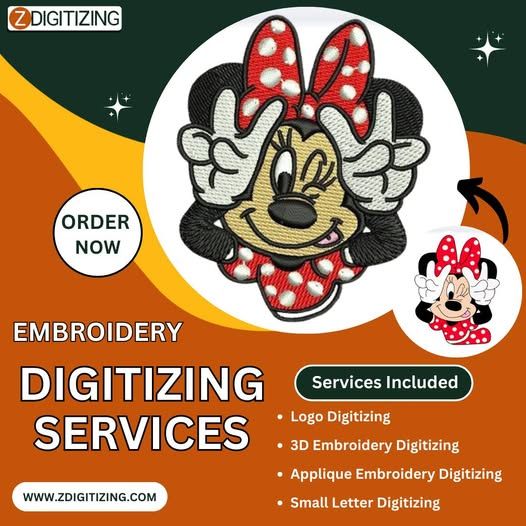Embroidery has long been valued for the detail and texture it brings to apparel, accessories, and promotional items. As digital tools continue to shape the customization industry, embroidery digitizing has become an essential service for anyone who wants accurate, professional, and machine-ready stitching results. An embroidery digitizing service converts artwork into a stitch file that embroidery machines can read, ensuring consistency, clarity, and smooth production.
Whether used for fashion labels, sports organizations, commercial branding, or hobby projects, professionally digitized files help achieve reliable embroidery outcomes. This article explains how digitizing works, why it is important, and what to look for when choosing a service provider.
What Is Embroidery Digitizing?
Embroidery digitizing is the process of turning artwork logos, icons, illustrations, and text into a file built from stitches rather than pixels. This is a technical process that requires an understanding of stitch behavior, fabric movement, thread types, and design structure.
A trained digitizer determines the stitch types, sequencing, density, and underlay needed to reproduce the design accurately on fabric. Because stitching behaves differently from printed graphics, the digitizer must adjust artwork to prevent distortion, uneven edges, or thread issues. When done correctly, a digitized file produces clean lines, sharp detail, and durability throughout repeated wash and wear.
How an Embroidery Digitizing Service Works
Although workflows vary between providers, most digitizing processes include the following stages:
Design Review
The original artwork is analyzed for complexity, clarity, and its suitability for embroidery. Some designs need adjustments before the digitizing phase begins.
Manual Digitizing
The digitizer assigns stitch types such as satin, run, or fill stitches. They determine how the embroidery machine will process each part of the design based on size, shape, and fabric type.
Density, Direction, and Underlay Planning
These settings directly impact the finished look. Proper underlay stabilizes the fabric, prevents shifting, and supports the top stitches.
File Conversion
The completed design is exported in machine-compatible formats such as DST, PES, JEF, and EXP.
Optional Sample Stitch-Out
A test run helps confirm accuracy before moving into full production.
Benefits of Using a Professional Embroidery Digitizing Service
Choosing an experienced digitizing provider adds value to any embroidery project:
Better Stitch Quality
High-quality digitizing reduces thread breaks, uneven tension, and misshapen details. The final embroidery looks clean and consistent across multiple items.
Compatibility With Many Fabrics
Fabrics react differently to needlework. An experienced digitizer adjusts stitch density and underlay based on material to prevent puckering or distortion.
Efficient Production
Accurate stitch files run smoothly on embroidery machines, allowing faster production with fewer interruptions.
Flexible Sizing Options
Digitized designs can be created in various sizes for caps, jackets, shirts, bags, and patches while maintaining clarity.
Cost Savings Over Time
Good digitizing reduces the need for rework, minimizes thread waste, and prevents production delays.
Common Uses for Embroidery Digitizing
Digitizing supports a wide range of industries and creative applications, including:
- Branding for uniforms, corporate wear, and promotional goods
- Sports team logos for apparel and accessories
- Fashion embellishments for custom clothing and outerwear
- Patches, badges, and emblems for professional or personal use
- Personalized home items such as towels, linens, or bags
- Monogramming for gifts and premium apparel
Its adaptability makes digitizing a dependable solution for both commercial and individual needs.
How to Choose the Right Embroidery Digitizing Service
A skilled digitizing partner like ZDigitizing can significantly improve the quality of your final embroidery. When evaluating a provider, consider the following:
- Experience and the strength of their portfolio
- Consistent turnaround times and the ability to handle urgent requests
- Knowledge of multiple machine file formats
- Transparent pricing
- Support for revisions and design adjustments
- Attention to detail in small text, gradients, and intricate artwork
A trustworthy service maintains clear communication, evaluates design feasibility, and ensures the final file performs correctly on the intended fabric and machine type.
Conclusion
Embroidery digitizing plays an essential role in transforming digital artwork into precise, machine-ready stitching. From branding projects to fashion customization, it supports both creative expression and professional production quality. Working with an experienced digitizing service helps achieve designs that are clear, durable, and well-suited to the materials being used. With the right provider, every project can produce dependable embroidery results that match the original design intent.
